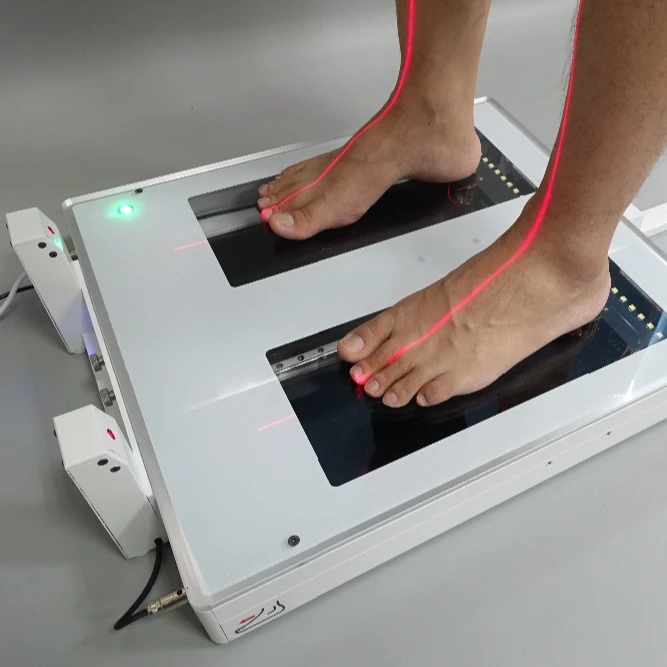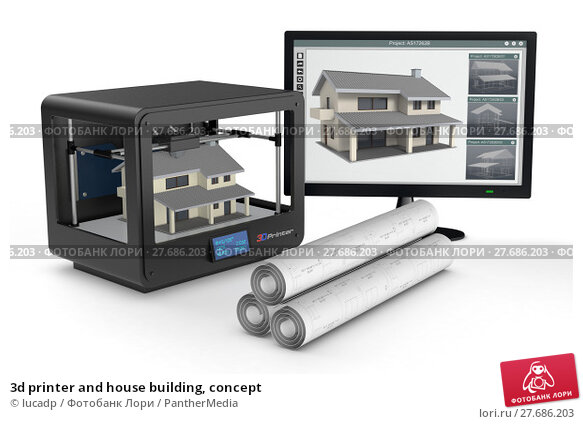3D foot scanner
What Is It and Why Is It a Necessity For Shoe Retailers? – Safesize
- 3D tech, machine learning, retail, SafeSize, shoes, startup
Recommending the right shoe is no easy task.
Consumers step into shoe stores every day and are overwhelmed by countless styles, brands, and models to choose from. And most of the time, when sales assistants approach the shoppers asking whether they need any help, the answer is negative as they believe they can decide based on the shoe display in front of them. This approach, combined with everyone’s unique foot anatomy, prevents people from buying shoes that can bring them comfort and protect them from injuries.
To tackle this challenge, global retail brands like INTERSPORT, Decathlon, Sport 2000, and others have started using 3D foot scanning technology to provide the best shoe recommendations.
For Safesize, retail innovation starts with a 3D foot scanner where consumers receive an analysis of their foot dimensions. This data is then used to assist sports enthusiasts in finding the most comfortable and best-performing shoe.
A 3D foot scanner analyses the foot anatomy and gives insights into your unique walking/running pattern, your weight balance, foot biometrics, and much more. With some foot scanners, the capabilities stop there. But in our case, this is just the start of a fully personalized shopping experience.
In the beginning, customers step on the scanner and fill out all personal information (such as age, gender, weight) as well as their favorite sports, brands, and intensity of exercise (from amateur to pro).
Within a few seconds, consumers receive a detailed foot analysis on the screen. Safesize offers unique matching of the foot characteristics with the largest shoe database in the world, meaning that it only takes these few seconds for a consumer to virtually try on thousands of shoes at once.
The result? With a tap on the screen, sales assistants see the best shoe recommendations for their customers – fully connected with the store’s inventory and entirely adapted to the shoppers’ personal preferences.
Why Is It a Necessity For Shoe RetailersThe benefits retail stores can enjoy with a 3D foot scanner are multidimensional and apparent across all touchpoints.
Everything starts by transforming your store into a stage. Creating a unique personalized experience captures the attention of shoppers and inspires them to come to a physical store rather than just shop online, and the 3D visualization of foot anatomy creates an opportunity to engage with the sales assistant in a meaningful, data-driven, and personalized interaction.
This unique shopping experience can result in higher conversions and cross-selling opportunities in-store.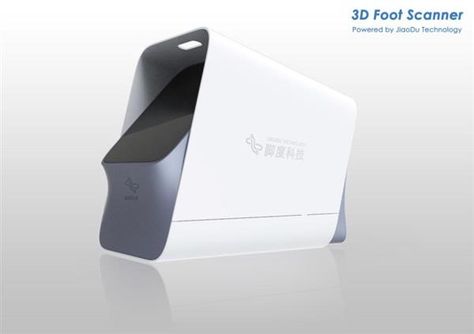 In fact, people feel more confident buying shoes and additional accessories (e.g. insoles) based on this personalized approach rather than Googling “The best running shoes” and then deciding to buy the cheapest option online.
In fact, people feel more confident buying shoes and additional accessories (e.g. insoles) based on this personalized approach rather than Googling “The best running shoes” and then deciding to buy the cheapest option online.
“This new technology just enables conversation and a personalized product recommendation.” – Ian Watson, CEO Hotter Shoes (Forbes.com, September 2021)
Diving into the operational benefits, the 3D foot scanner will enable shoe retailers to provide their sales team with a digital sales assistant on the shop floor. This acts as a constant re-training of sales assistants, increasing the level of expertise and transforming even a novice salesperson into an expert – all with just a few interactions with the SafeSize 3D foot scanner.
By capturing consumer profiles, the physical shoppers are no longer invisible to the retailer. Leveraging the foot profiles and past purchase data, the sales approach can be further adapted to fit their specific needs.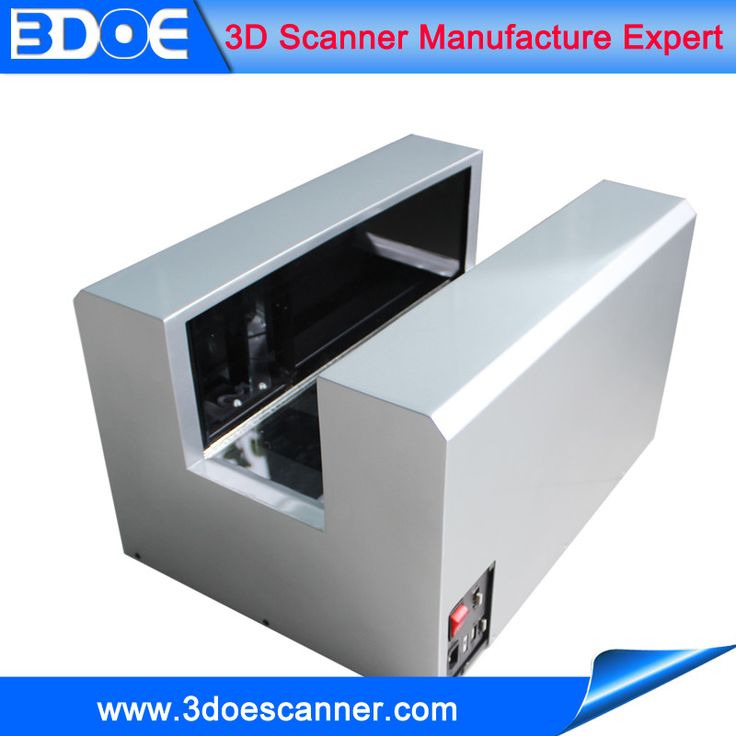
Last but not least, through this process, the shoe retailer ensures a uniform and highly knowledgeable sales approach across all stores and all sales assistants.
Perks For ConsumersRetail innovation is all about creating a unique and elevated shopping experience. With a pinch of excitement, a dash of entertainment, and a spoonful of expertise, 3D foot scanning technology creates the recipe for a shopping experience you don’t want to miss!
By using a 3D foot scanner, within seconds consumers receive better shoe model recommendations based on biometrics and functional characteristics, rather than just deciding based on their favorite brand, color, and price. At the same time, they can rest assured that their feet won’t be in pain anymore or prevent them from enjoying their favorite sports – no matter the level of expertise!
What’s more, through their personal profile, consumers can access their foot analytics and previous purchases. Based on that, they can easily make the right purchase again in the future – either online or in any other store of the shoe retailer.
Based on that, they can easily make the right purchase again in the future – either online or in any other store of the shoe retailer.
Interested in starting a unique and innovative journey in the retail industry and surprising your customers with a profound shopping experience?
Click Here
Featured posts
The latest industry news, interviews, technologies, and resources.
Want to buy shoes online, but not sure if they’ll fit? That’s where SafeSize comes in. The Almere-based startup works with online and offline footwear retailers to help customers find the right shoe. Using
Read More
Tech innovation in retail is a fact – and a much-needed one! A lot of shoe retailers have already started using 3D foot scanners to add digital touchpoints in their
Read More
When it comes to shopping advice, personalization is no longer a “nice to have” – it’s at the core of customer experience. For shoe brands and retailers, delivering such a
Read More
On this year’s World Day for Safety and Health at Work let us all be responsible to ensure our working environment is safe, healthy and a place where people can
Read More
Six things to consider about retail 3D foot scanners
New technology can be complicated.
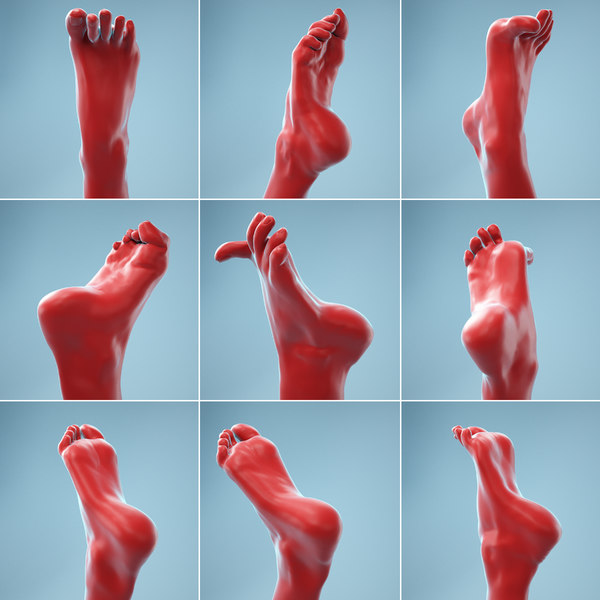 We’ve put together a checklist to make it easy to choose the right foot scanner for your stores.
We’ve put together a checklist to make it easy to choose the right foot scanner for your stores. 3D foot scanning technology is revolutionizing the footwear industry. Gone are the days of huffing and puffing while trying on multiple pairs of ill-fitting shoes or stepping on clunky measurement devices. The entire shopping experience has needed to be faster, better and more fun. Scanning shopper’s feet enables new possibilities for digital sales channels. Most retailers have limited knowledge about 3D scanning technology, therefore the task of vetting what’s out there can be daunting. There has been a sharp uptick in new foot scanning products being introduced to the market, and very often advantages and disadvantages of new products are unclear. What to pay attention to? Which technology works best? What questions to ask, to separate good from the bad?
1. User Experience
User experience is key to retail. The ideal experience should be one-click and effortless. If shoe shoppers and sales associates don’t engage and the experience isn’t enjoyable, no amount of accuracy or data savviness is going to help.
If shoe shoppers and sales associates don’t engage and the experience isn’t enjoyable, no amount of accuracy or data savviness is going to help.
To evaluate the shoe shopper experience of the scanning process, you should examine the following parameters:
- It is important that the scanning process is quick, the stand still time must be no more than 5 seconds. Based on our research, we concluded 10 seconds of scanning time is a no-go. Things get hectic very fast in retail stores on busy days.
- Technology should be subtle so that store associates can do what they do best: engage with customers. You should be able to step on, press a button and hey presto, done. It should work barefoot or with socks of any color. When capturing pressure distribution, walking over a small patch of scanner is a big no-no since the experience will be horrible -- hello tripping hazard -- not to mention the gait will be unnatural and hindered.
- Make sure that shoe shoppers will enjoy the experience of scanning feet.
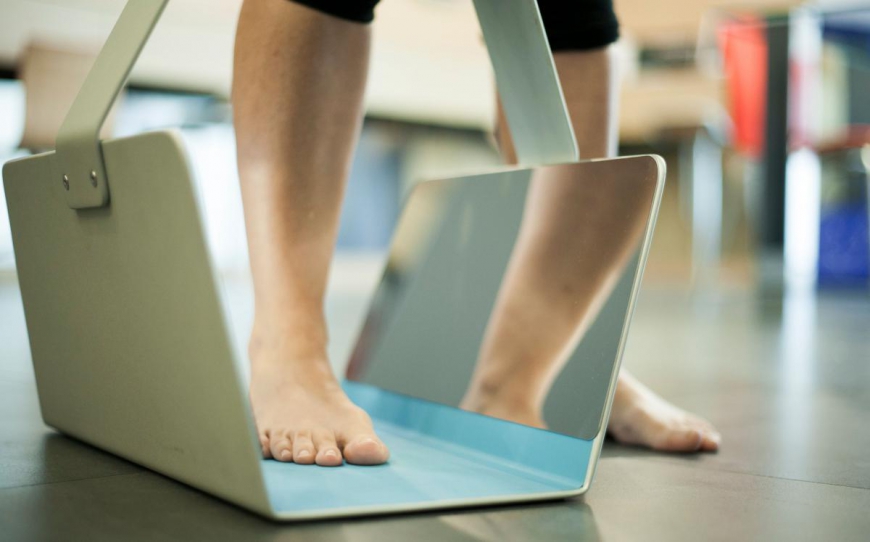 They have to feel empowered by the results of the scan. Make sure that the results are actionable and easy to understand, so that shoe shoppers can make a better purchase decision using the scan. Keep in mind that measurements of various parts of the foot are required to find the best fitting shoes, using only foot length and width is not sufficient.
They have to feel empowered by the results of the scan. Make sure that the results are actionable and easy to understand, so that shoe shoppers can make a better purchase decision using the scan. Keep in mind that measurements of various parts of the foot are required to find the best fitting shoes, using only foot length and width is not sufficient.
2. Accuracy
You want to make sure that the foot measurement results are accurate so that your sales associates will trust the technology they’ll be using every day. It’s easy to make bold claims about the accuracy, anyone can do it. It’s harder to back it up with actual material, scientific papers, or otherwise.
Here is what you should be looking at:
- Check the precision: make sure that scanning the same person several times in a row gives you very similar results. You can expect some variability if scanning real feet since it’s really difficult to ensure exactly the same pose of feet every time you make a scan.
 If possible, use a few pairs of plastic feet of different sizes to eliminate the variability of real feet when estimating the precision of a scanner.
If possible, use a few pairs of plastic feet of different sizes to eliminate the variability of real feet when estimating the precision of a scanner. - Exactness (or trueness): After scanning the same feet several times in the previous step, calculate average measurements and compare them to measurements of an alternative method (you can use a Brannock device or a caliper). Results of the scanner and the alternative method should be within 1mm difference to consider them exact or true. Keep in mind that the length difference between two consecutive shoe sizes is only 4.23mm.
Making claims about accuracy is easy, many tech partners flaunt wild numbers. A 0.1mm accuracy is highly suspicious and unattainable, and it’s a red flag for other claims a potential tech partner may make. Request detailed explanations of what exactly the accuracy claims mean and how they were obtained! - Dig deep, ask for written detailed reports. The larger the number of feet used in the accuracy evaluation, the more you can trust the accuracy figures.
Some vendors claim that their technology captures a 3D shape of the foot, but only experts in computer vision and 3D scanning can tell how accurately the cameras and computational methods being used in a solution really capture 3D shapes. If you don’t have in-house knowledge in these fields, find help from an external consultant to get a technical assessment of the solution you want to use in your retail channels. This is important especially if you’re looking at solutions that use mobile phone cameras.
3. Analytics
Equally important is an analytics dashboard that is delivered to your inbox. Metrics such as the average number of scans per day per store, the number of online scanners and so on, are vital to run a smooth operation in-store and online. Store managers need support from HQ. You should think of the following parameters when choosing any technology for your stores:
- Automated analytics is available and easy to set up on day one.
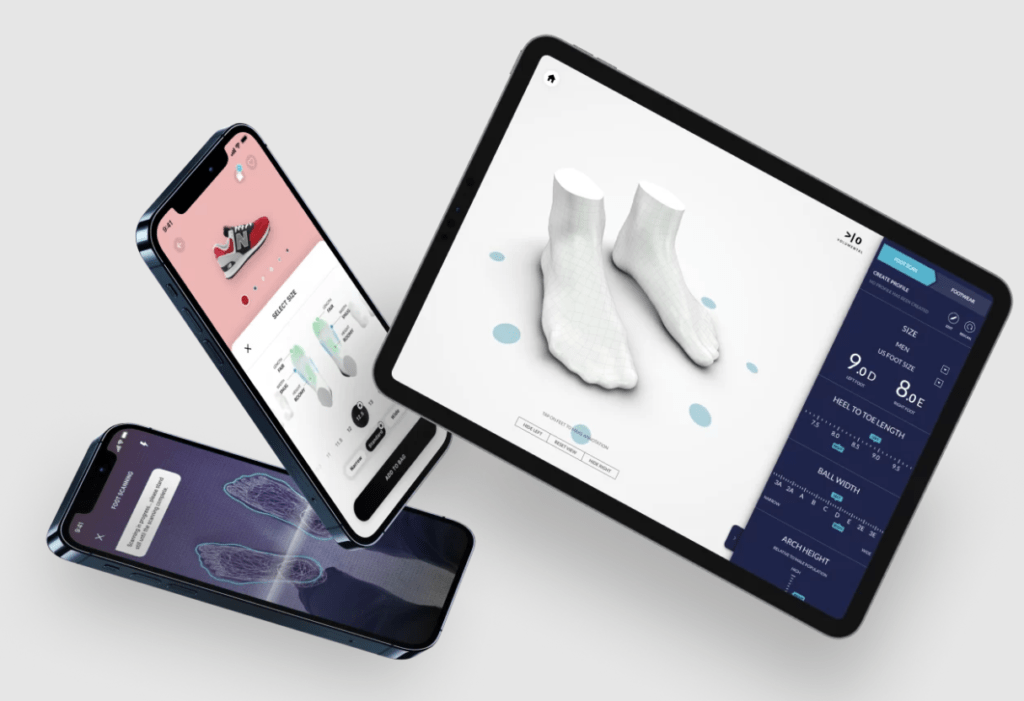 Ask the tech partner what kind of analytics capabilities are available to them. If it’s not already in place - then do not go further.
Ask the tech partner what kind of analytics capabilities are available to them. If it’s not already in place - then do not go further. - Make sure every sales associate gets proper training before they start using the scanning technology.
- Sales associates shouldn’t be dealing with any hardware or software issues, but sometimes things can go wrong. Ask the tech partner about their support team, how fast they solve issues and how satisfied their other retailers are with their support.
In today’s world, even cars get software updates whenever it is needed. An agile tech partner should respond to any issues or feedback quickly.
- Ask the tech partner how frequently they deploy new updates. If it is non-existent or if it’s more than a month in the frequency of updates and complicated, then they are probably not a reliable tech partner.
- It is important that the solution continuously adapts to the feedback of sales associates and shoppers.

- Make sure that frequent software updates are automatically installed without any involvement of sales associates. Ask how they do it with their other customers.
5. Omnichannel Capabilities
Shoppers these days shop everywhere and expect a great experience in all channels. That is why the 3D data and insights gathered in the store should be available through your e-commerce sites. The importance of online sales got a boost from the Covid-19 crisis. Digital sales channels will be increasingly important even after the Covid 19 crisis. Whatever solution you pick needs to have a product offering to support digital sales and marketing channels, as well as strong integration possibilities with your existing digital platforms.
- Make sure the data collected in-store can be used online in an easy, non-convoluted way. Working with one partner on all fronts is the ideal setup since bringing another company to the mix could complicate things and take even more time.
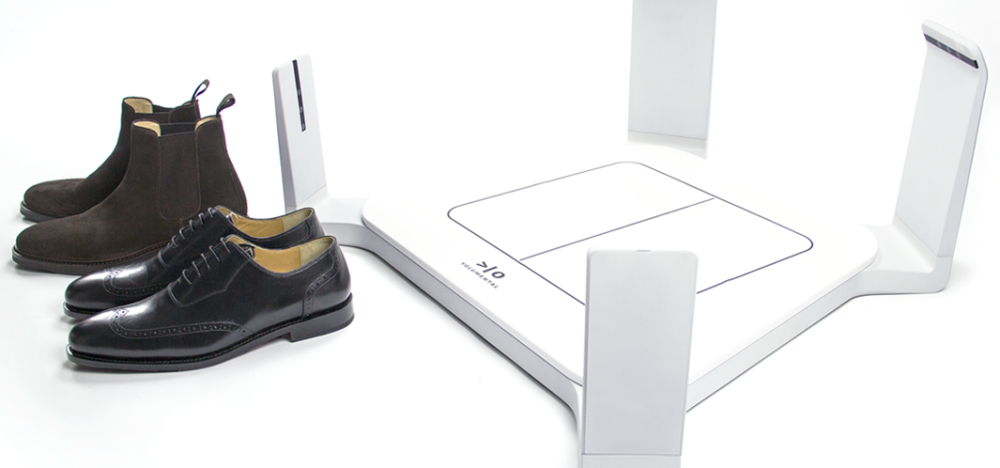 Ask the tech partner what they can offer in terms of omnichannel and what they are capable of delivering across all channels.
Ask the tech partner what they can offer in terms of omnichannel and what they are capable of delivering across all channels. - Mobile is the new desktop. Mobile foot scanning is even more so. Ask the tech partner what concrete products they’re working on beyond their scanner, does it sound vague? Perhaps they don’t really have any.
- Digital marketing tools to create personalized experiences. Now that you have a relationship with the customer and know all about their foot, are you able to use this information to retain them in your ecosystem? Does the partner offer digital marketing tools or fit visualizations that you can use in email or SMS campaigns to tell them which shoes you have that will fit them perfectly? Can you create personalized shopping pages on your e-commerce site that curate the best-fitting shoes for each shopper? Make sure that any FitTech partner you go with can do more than just scan and offer recommendations, but can help you stay connected with your customers through all touchpoints.
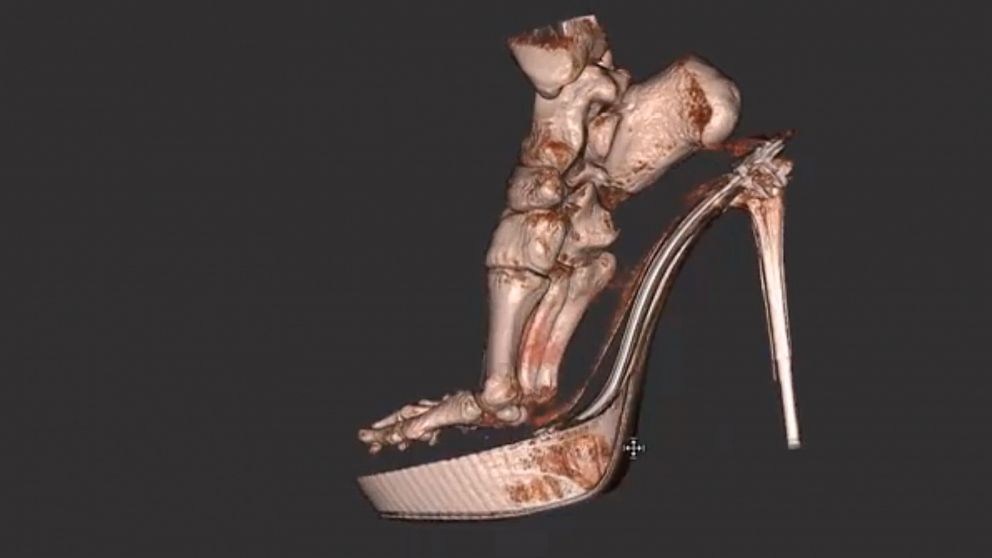
6. The Team Behind The Tech
Last but not least, remember that products are made by people and those people need a vision. You want to work with a tech partner that is agile and ambitious and continues to offer new solutions based on new technologies. The best companies to work with are tech-savvy and manage to maintain a talented team that enables your sales channels to win over existing and new shoe shoppers again and again.
The authors
Ales Jurca has been applying 3D foot scanning technology to the footwear industry since 1999. He used 3 different medical laser foot scanners in his early research, and he managed developments of 4 generations of retail foot scanners. Ales is the VP Footwear Research at Volumental.
Alper Aydemir is an entrepreneur with a background in robotics and computer vision. After a PhD in robotics, he has worked at NASA JPL and Google's Project Tango, aiming to bring computer vision to the masses.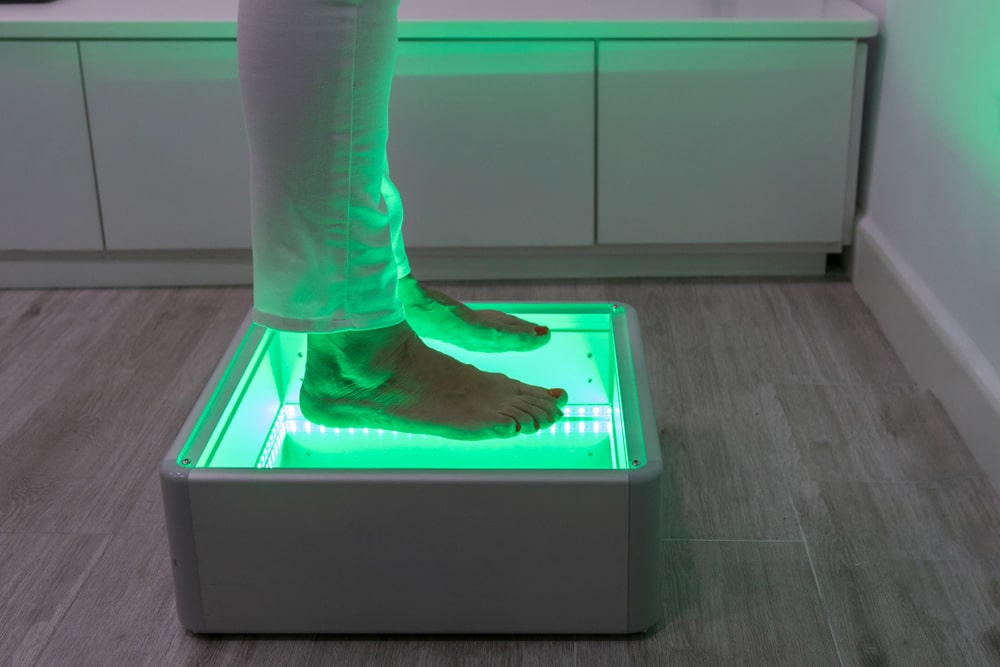 Alper is a co-founder and the CTO at Volumental.
Alper is a co-founder and the CTO at Volumental.
Review: CNews: IT trends 2022 - 3D foot scanner of an American company received a Russian voice assistant
New functionality - additional benefits
More and more companies are thinking about how to make life easier for customers and employees with the help of modern developments. Aetrex is one of them, which is actively developing in the field of foot scanning and premium orthotics technologies, with which customers can choose the right shoes and orthopedic insoles to maintain foot health. Their flagship scanner Albert 2 Pro takes the most accurate and complete measurements of the customer's foot, including data on pressure points on the surface, and from this creates a 3D model of the foot. nine0007
The equipment uses a variety of sensors, computer vision, artificial intelligence and machine learning technologies to collect maximum foot data. For example, computer vision technology allows you to create three-dimensional images of the legs. Machine learning improves the accuracy of matched products. As a result, in less than a minute, the user learns the size, length, width, height of the foot, pressure and type of arch. With the help of this data, artificial intelligence finds suitable shoes or orthopedic insoles among the store's product list, and the seller can recommend them to customers. nine0007
For example, computer vision technology allows you to create three-dimensional images of the legs. Machine learning improves the accuracy of matched products. As a result, in less than a minute, the user learns the size, length, width, height of the foot, pressure and type of arch. With the help of this data, artificial intelligence finds suitable shoes or orthopedic insoles among the store's product list, and the seller can recommend them to customers. nine0007
Aetrex Technology has created all hardware and software for the scanner itself. Since contactless control of equipment became relevant in the era of the pandemic, the developers decided to equip Albert with a voice assistant. And offer customers a new generation scanner - Albert 2 Pro.
To develop a contactless control system, Aetrex contacted Harman, the creator of the Harman eNova platform, designed to create and personalize voice assistants. The AI-powered, scalable platform runs locally on devices and over closed networks, as well as over the internet in cloud data centers. nine0007 With the help of modern technology, customers can quickly select orthopedic insoles or shoes
nine0007 With the help of modern technology, customers can quickly select orthopedic insoles or shoes
The platform is a set of ready-to-use components, a system for their interaction and administration. It allows you to create products in the field of voice interaction interfaces that meet high requirements for performance, accuracy and security of personal data.
For example, in 2019, Harman created the AI voice assistant Zoe, which works on MSC Cruises cruise ships. He speaks seven languages and can answer hundreds of questions about services and entertainment on board. Before the launch, experts tested the dialogues, speech recognition systems and the ability to transform speech into text and vice versa. Zoe is currently installed on three MSC Cruises ships. nine0007
From idea to implementation
Harman's main challenge was to integrate English voice control into existing Aetrex equipment. In order for the consultant to have access to a set of commands, including “Begin scan male / female”, “Go to Shoe Recommendations”, that is, a request for access to the cloud-based system of intelligent responses.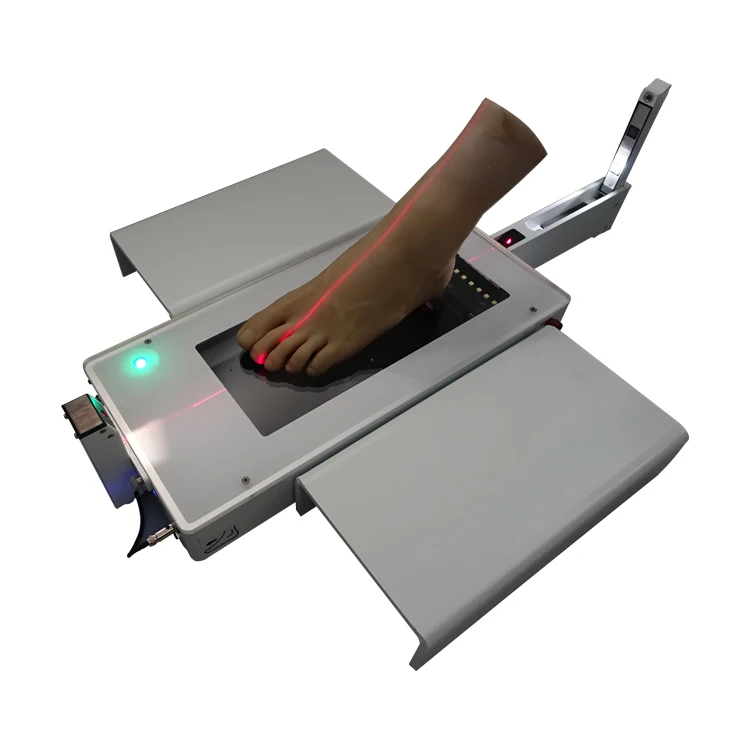 This was a new functionality for the scanner: in the first generation, the consultant in the store used a touch screen for control. nine0007
This was a new functionality for the scanner: in the first generation, the consultant in the store used a touch screen for control. nine0007
Work on the project lasted about six months. Harman representatives collected audio data to train the voice recognition system. The system was taught to distinguish between keywords, control commands, and questions to artificial intelligence related to the selection of shoes. We developed and agreed on the architecture of the voice assistant with Aetrex engineers, created two AI models. The first offline listened to voice commands to control the scanner. The second online recognized questions to artificial intelligence and the training center. nine0007
Harman eNova platform modules were responsible for implementation. For example, the "Wake-word engine" module allows you to activate the system using the callsign "Hey Albert". The command recognition module for controlling the scanner works on hardware and in conjunction with the software of the scanner itself. The AI database command recognition module sends the user's request to the cloud and selects the appropriate response.
The AI database command recognition module sends the user's request to the cloud and selects the appropriate response.
Final test
Harman did not have physical access to the customer's equipment, all work on the project took place remotely. The system was tested on computers similar in configuration to those used by Aetrex for Albert. Harman test engineers used the same wireless microphones used by Aetrex consultants.
This is what Albert 3D scanners look like.At the final stage of testing, the customer installed the new software on Albert 3D scanners in several stores and asked consultants to test the system. In case of problems, the collected audio data and debug files were sent to Harman for analysis and correction. nine0007
Lost in translation
The stage of collecting audio data for training the Wake-Word Engine took the most time. Harman representatives turned to an American company that prepared sound files - recorded the voices of men and women of different ages and with different accents: from Hispanics to natives of China. They spoke the callsign and scanner control commands in English. So Harman was able to take into account all the peculiarities of pronunciation that customers of the Aetrex chain of stores may have. nine0007
They spoke the callsign and scanner control commands in English. So Harman was able to take into account all the peculiarities of pronunciation that customers of the Aetrex chain of stores may have. nine0007
Another interesting nuance was in the unification of the call command. For example, the user might say "Go to Learning Center" or "Go to Learning Center, please!". The developers taught the system to correctly consider both options.
Customer and contractor were having difficulty selecting the right wireless microphone. It was necessary to find a high-quality device capable of operating from a battery of 8–12 hours and drowning out specific sounds in stores: air conditioning noise, advertising, car horns from the street, fragments of customer conversations. As a result, we chose a radio headset model from a Chinese manufacturer. It passed all tests and was approved by the customer. nine0007
New and future
Aetrex and Harman successfully collaborated to create a new generation of foot scanners, the Albert 2 Pro 3D foot scanner. It allows sales representatives in Aetrex retail stores to select products for customers without contact and advise people on the assortment. Management is carried out using a voice assistant.
It allows sales representatives in Aetrex retail stores to select products for customers without contact and advise people on the assortment. Management is carried out using a voice assistant.
That's how it works. The customer comes to the store to pick up the right shoes or insoles and is offered to use the scanner. The salesperson uses a microphone to start the equipment, asks Albert - the helper character built into the scanner software - a question about the data obtained from the scan or the status of the customer's stop, and receives an instant response with all the necessary data, images or videos. nine0007 The 3D foot scanner allows sales representatives to pick up items for customers without contact.
Development can also be used as a training center. A realistic 3D character helps users navigate the software.
Albert's foot scanner voice control solutions are based on the customizable Harman eNova platform and can be used in any area that requires a voice assistant or just voice control. This platform has a set of ready-to-use components, as well as systems for their interaction and administration. The set consists of high-precision automatic speech recognition (ASR), natural language processing and understanding (NLU), speech synthesis (TTS) systems. nine0007
This platform has a set of ready-to-use components, as well as systems for their interaction and administration. The set consists of high-precision automatic speech recognition (ASR), natural language processing and understanding (NLU), speech synthesis (TTS) systems. nine0007
The Harman eNova platform can be used as a ready-made product with minimal implementation time, or as a tool for creating new personalized voice interfaces. According to representatives of Harman, in both cases, the cost of post-warranty service is absent or minimized.
Using the Harman eNova platform for creating and personalizing voice assistants, Aetrex has upgraded its Albert 3D scanner software. The platform allows brand sales representatives to carry out contactless foot scanning and select the most suitable shoes or insoles for customers and advise on the range. Management is carried out using a voice assistant. nine0007
Individual orthopedic insoles | 3D foot scanner
Flat feet and various deformities of the foot joints are the group of the most common pathologies in the human population.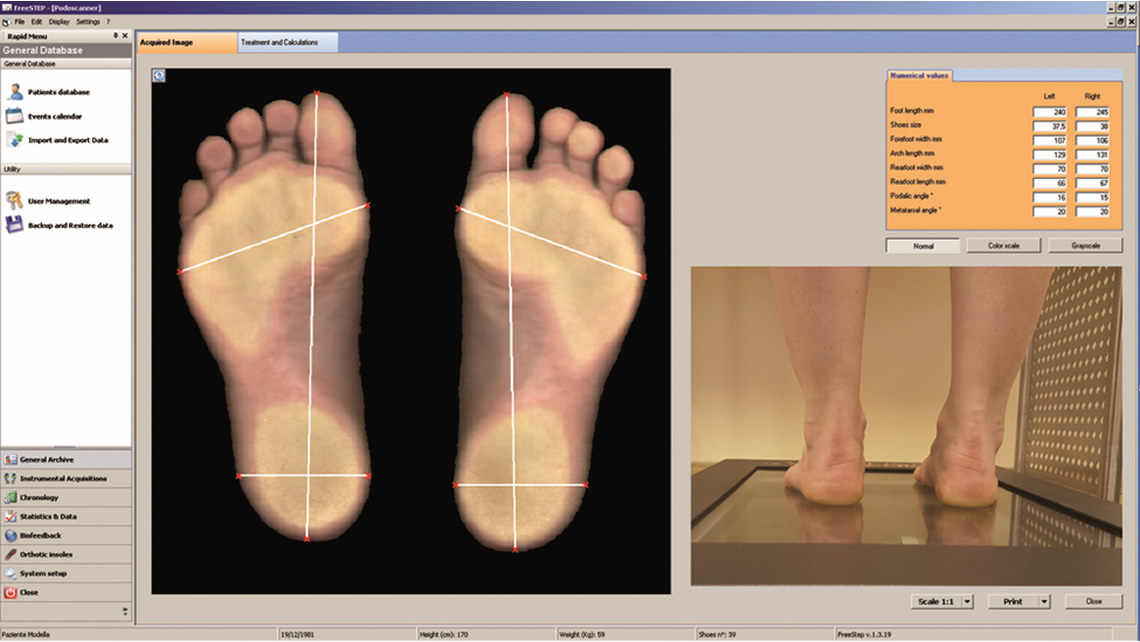 These pathological changes in the foot affect the knee, ankle, and spinal joints. Flat feet can cause not only pain in the legs, but also pain in the spine and even the neck.
These pathological changes in the foot affect the knee, ankle, and spinal joints. Flat feet can cause not only pain in the legs, but also pain in the spine and even the neck.
It would seem, at first glance, a harmless condition - flat feet. Therefore, early detection and timely treatment of such a seemingly harmless condition can prevent the development of arthrosis of the leg joints and the occurrence of pain syndromes in the spine. nine0007
What's new in the treatment of flat feet in children and adults.
The main methods of treatment and prevention of flat feet are the training of the muscles of the legs and feet, this is especially important in children, and the use of orthopedic insoles. In adults, the foot is already formed and the main element of the correction is the maintenance of the arches of the foot. This is achieved by using the same orthopedic insoles. as we see, there is very little new, but .. the technologies for diagnosing flat feet and making insoles have stepped forward. No one has any doubts that the best correction of flat feet is the one that uses the technology of individual manufacturing of orthopedic insoles, for example, by foot impression. nine0066 The latest Swiss equipment Orthema for examining the relief of the foot appeared at the Avatage Medical Center - a 3D tactile scanner Dijitizer Orthema and a 3D robot cutter that creates insoles from a special orthopedic material (EVA) with different material densities.
No one has any doubts that the best correction of flat feet is the one that uses the technology of individual manufacturing of orthopedic insoles, for example, by foot impression. nine0066 The latest Swiss equipment Orthema for examining the relief of the foot appeared at the Avatage Medical Center - a 3D tactile scanner Dijitizer Orthema and a 3D robot cutter that creates insoles from a special orthopedic material (EVA) with different material densities.
A new technology for scanning the foot and manufacturing individual orthopedic insoles in 3D format.
Orthema Dijitizer13 tactile 3D foot scanner.
There are various options for scanning the foot with the aim of further manufacturing, based on these data, individual orthopedic insoles for the treatment of various types of flat feet. Most of them are based on the use of photo-scanning devices. These measurement devices are carried out in planes, only software processing reaches the data to 3D mode. The Orthema Dijitizer13 tactile scanner measures in 3 planes and really displays the three-dimensional relief of the foot. A program specially created for him makes it possible to create corrections depending on the tasks. either this is the formation of support for the arches of the foot of the person under study with flat feet, or the use of arch supports and pronators, or the creation of unloading of various parts of the human foot, for example, with a diabetic foot. Equipment of this type is so far the only one in Ukraine and is located in the branches of the Avatazh medical center in Kyiv, Zaporozhye and Chernivtsi. nine0007
A program specially created for him makes it possible to create corrections depending on the tasks. either this is the formation of support for the arches of the foot of the person under study with flat feet, or the use of arch supports and pronators, or the creation of unloading of various parts of the human foot, for example, with a diabetic foot. Equipment of this type is so far the only one in Ukraine and is located in the branches of the Avatazh medical center in Kyiv, Zaporozhye and Chernivtsi. nine0007
Foot diagnostic procedure using a 3D foot scanner.
This foot scanner allows you to measure the shape of the foot with static load, without it, during medical correction of the foot.
A computer program combines all the data and generates the correction recommended for this particular case and the individual shape of the insole. In addition, the specialist who conducts the measurement can independently make measurements based on experience and the need for correction. The data processed by the program is transferred to a 3D cutter, which cuts out a finished insole from a special material (evapora). If necessary or at the request of the client, so much can be covered with various materials, such as leather or pedilin, or carbon coating. nine0007
In addition, the specialist who conducts the measurement can independently make measurements based on experience and the need for correction. The data processed by the program is transferred to a 3D cutter, which cuts out a finished insole from a special material (evapora). If necessary or at the request of the client, so much can be covered with various materials, such as leather or pedilin, or carbon coating. nine0007
Tactile 3D foot scanner for diagnosing foot pathology
Three-dimensional relief of the foot after scanning on the 3D foot scanner Orthema
Swiss specialists have created a special program that visualizes information about the foot. This program processes the data obtained by scanning the foot under static load and the measurement data that were taken excluding static load with the foot in the physiological position. To this, research data in dynamics (when moving) can be added. nine0007
The program of the Swiss company Orthema is multifunctional. Allows the specialist to make changes and create the necessary elements in the insole to correct various pathologies, for example, with a diabetic foot or with hallux valgus. With the help of the program it is possible to model insoles for athletes or for people with heavy physical labor. It is also possible to create insoles with pronounced flat feet in the elderly or prophylactic insoles at a young age.
Allows the specialist to make changes and create the necessary elements in the insole to correct various pathologies, for example, with a diabetic foot or with hallux valgus. With the help of the program it is possible to model insoles for athletes or for people with heavy physical labor. It is also possible to create insoles with pronounced flat feet in the elderly or prophylactic insoles at a young age.
The data about the finished insole, processed by the program, is sent to a 3D cutter, which quickly cuts the finished insole from a special material. The insoles correspond exactly to the parameters of the foot of the person whose measurements were used to make an individual orthopedic insole.
Considering the huge influence of the foot on the overlying parts of the human musculoskeletal system, the list of indications for the use of individually made insoles using 3D technology is very wide. These insoles can be used for preventive purposes up to and including the treatment of serious foot conditions such as diabetic foot. nine0007
nine0007
- Prevention of longitudinal flat feet
- Prevention of longitudinal and transverse flat feet.
- Longitudinal flatfoot
- Longitudinal-transverse flatfoot
- Long-term static loads, for example, in people whose work involves standing for a long time
- In overweight people
- Hallux valgus
- Long-term dynamic foot loads in athletes
- For foot pain
- Diseases of the joints of the legs, e.g. arthrosis of the hip joint
- Diabetic foot
- When you need to unload the forefoot.
Ready-made insole according to an individual impression of the foot.
Insole made of materials with different densities
3D technology for manufacturing individual orthopedic insoles allows you to quickly and accurately produce the required format of insoles. The materials from which the Orthema insole is made have all the necessary characteristics to provide an orthopedic effect.